North Macedonia
Welcome to North Macedonia
Nestled in the heart of the Balkans, North Macedonia is a land where ancient history and vibrant modern life intertwine. From the sparkling shores of Lake Ohrid to the bustling streets of Skopje, this small yet captivating country offers a unique blend of natural beauty, rich heritage, and warm hospitality. Whether you’re an adventurer, a history buff, or a lover of authentic cuisine, North Macedonia promises an unforgettable journey off the beaten path.
North Macedonia is a country of contrasts and convergence. Its landscapes range from dramatic mountain peaks and serene lakes to lush valleys dotted with vineyards and ancient monasteries. The capital, Skopje, is a city reborn-its modern skyline punctuated by Ottoman-era mosques, Byzantine churches, and neoclassical monuments. Meanwhile, the UNESCO-listed town of Ohrid enchants visitors with its medieval architecture, lakeside promenades, and a spiritual legacy that stretches back to the dawn of Christianity.
Despite its wealth of attractions, North Macedonia remains refreshingly under-explored, offering travelers an opportunity to experience Europe as it once was: authentic, welcoming, and full of surprises. Here, you’ll find a tapestry of cultures shaped by centuries of Roman, Byzantine, Ottoman, and Slavic influences, reflected in everything from the architecture to the cuisine.
Why Visit North Macedonia?
1.
North Macedonia is a paradise for nature lovers and outdoor enthusiasts. The country’s national parks-like Mavrovo, Pelister, and Galicica-are havens of biodiversity, offering hiking, biking, and wildlife-watching opportunities amid pristine forests, alpine meadows, and glacial lakes. Lake Ohrid, one of Europe’s oldest and deepest lakes, invites visitors to swim, sail, or simply relax on its tranquil shores. For those seeking adventure, the rugged mountains are perfect for trekking, paragliding, and winter sports.
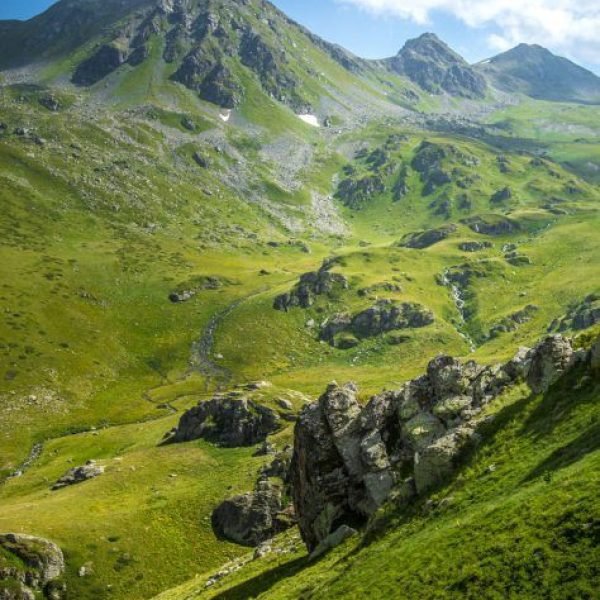
2.
Step back in time as you wander through ancient towns, medieval fortresses, and centuries-old monasteries. Skopje’s Old Bazaar is a labyrinth of cobbled lanes, lively markets, and historic mosques, while Ohrid dazzles with its iconic churches and Roman amphitheater. The country’s cultural calendar is packed with festivals, from the traditional Galičnik Wedding Festival to the Ohrid Summer Festival, showcasing music, dance, and local traditions. Add to this a thriving food scene-think hearty stews, fresh salads, and world-class wines-and you have all the ingredients for a richly rewarding travel experience.
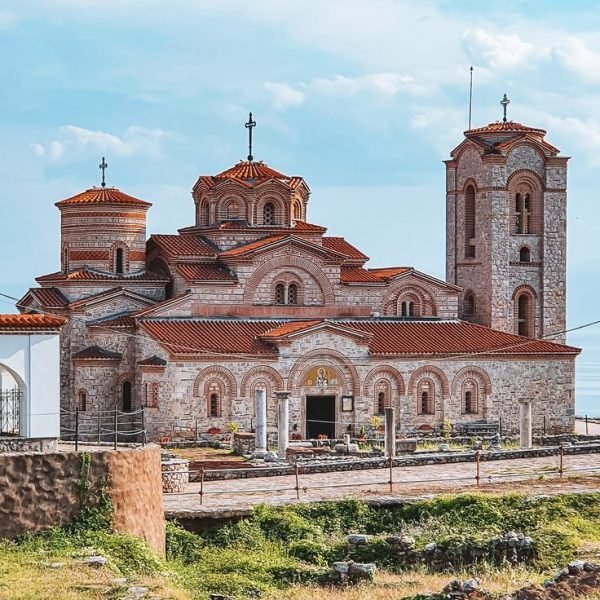
Planning Your Trip
Visa Information
North Macedonia has a relatively open visa policy, making it accessible for most travelers. Citizens of European Union member states and countries that are signatories of the Schengen Agreement do not require a visa and may enter with just a valid national identity card. For third-country nationals, those holding a temporary residence in an EU or Schengen country, or a multiple-entry Schengen visa valid for at least five days beyond their intended stay, can visit for up to 15 days per entry, not exceeding 90 days within any 180-day period.
Travelers who do require a visa should apply at the nearest Macedonian diplomatic or consular mission, no earlier than six months and at least 15 days before their planned trip. Required documents typically include a valid passport, proof of travel medical insurance, evidence of accommodation, sufficient funds, and a letter stating the purpose of your visit. For minors, applications must be submitted by a parent or guardian. Always check the latest requirements before you travel, as regulations can change.
Best Time to Visit
North Macedonia enjoys a continental climate, with hot summers, crisp autumns, and snowy winters. The best time to visit depends on your interests:
- Spring (May–June): Wildflowers bloom in the mountains, and temperatures are mild-ideal for hiking, cycling, and exploring the countryside.
- Summer (July–August): This is the peak season, with long sunny days and temperatures reaching up to 28–30°C, especially in Skopje and Ohrid. It’s perfect for swimming in Lake Ohrid, attending festivals, and enjoying outdoor cafes. However, popular spots like Ohrid can get busy, so book accommodations early.
- Autumn (September–October): The weather remains pleasant, and the landscapes are painted in golden hues. This is a wonderful time for wine tours and cultural sightseeing, with fewer crowds.
- Winter (December–February): Snow transforms the mountain regions into ski resorts, such as Mavrovo, offering excellent conditions for winter sports.
For most travelers, late spring, summer, and early autumn are the most enjoyable periods, balancing good weather with vibrant cultural events.
Getting To and Around
Getting There
North Macedonia’s main international gateway is Skopje International Airport, located about 23 kilometers from the capital. The airport is served by several European carriers, with direct flights from major cities such as Vienna, Istanbul, Zurich, and London. Ohrid also has a smaller airport with seasonal flights, mainly catering to tourists in the summer months.
For overland travelers, North Macedonia is well-connected by road and rail to neighboring countries, including Greece, Serbia, Bulgaria, Albania, and Kosovo. International buses run regularly to and from Skopje, making cross-border travel straightforward.
Getting Around
Traveling within North Macedonia is easy and affordable, thanks to its well-developed public transport system. Intercity buses are the most common and cost-effective way to move between cities and towns. They are frequent, reliable, and cover most destinations, including rural areas. For a more local experience, minivans known as “furgons” connect smaller villages, offering a glimpse into daily life outside the main tourist centers.
In Skopje, the public bus network is extensive and efficient, making it simple to explore the city’s neighborhoods and attractions. Taxis are widely available and inexpensive by European standards.
For those who prefer flexibility, renting a car is a great option. The country’s road network is generally in good condition, and driving allows you to reach remote monasteries, mountain trails, and hidden lakes at your own pace. Just remember that mountain roads can be winding and narrow, so drive with care.
Cycling is another excellent way to explore North Macedonia, especially in scenic regions like Ohrid and the national parks. Guided tours are available for those who want to combine activity with cultural immersion.
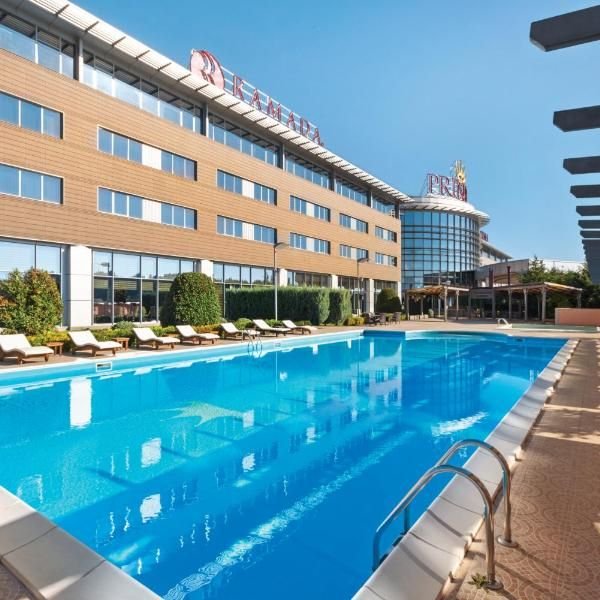
Accommodation
North Macedonia offers an impressive array of accommodation options, catering to every type of traveler and budget. Whether you’re seeking the comfort of a modern hotel, the charm of a family-run guesthouse, or the adventure of rural stays, you’ll find plenty of choices across the country.
Hotels and Resorts
In the capital city of Skopje, as well as in major tourist centers like Ohrid and Bitola, you’ll discover a selection of international and boutique hotels. These range from luxury establishments with panoramic views and spa facilities to mid-range hotels that offer comfort and convenience. Many hotels in Skopje are located near the city center, making it easy to explore the main attractions, vibrant nightlife, and historic Old Bazaar.
Ohrid, famed for its lakeside beauty, boasts a mix of lakeside resorts, boutique hotels, and charming villas. Many properties offer stunning views of Lake Ohrid, private beaches, and easy access to the old town’s UNESCO-listed sites. During the summer months, it’s wise to book in advance, as the town becomes a magnet for both domestic and international visitors.
Guesthouses and Bed & Breakfasts
For a more personal touch, guesthouses and bed & breakfasts are scattered throughout North Macedonia. These family-run establishments provide a warm, authentic experience, often including home-cooked breakfasts and insights into local life. In smaller towns and villages, guesthouses are a fantastic way to immerse yourself in Macedonian hospitality, with hosts eager to share stories, traditions, and sometimes even a glass of homemade rakija.
Apartments and Vacation Rentals
Travelers seeking independence or traveling in groups may opt for apartments or vacation rentals. These are widely available in cities and tourist areas, offering amenities like kitchens and laundry facilities. This option is especially popular in Ohrid, where lakeside apartments provide a homey base for exploring the region.
Rural Stays and Eco-Lodges
For those wanting to experience North Macedonia’s natural beauty up close, rural stays and eco-lodges in the countryside or near national parks are an excellent choice. Many of these lodges are built in traditional styles and offer activities such as hiking, horseback riding, and wine tasting. Staying in a rural guesthouse allows you to savor the slower pace of village life and enjoy farm-to-table meals.
Hostels and Budget Options
Budget travelers will find hostels in Skopje, Ohrid, and other popular towns. Hostels in North Macedonia are typically clean, friendly, and centrally located, making them ideal for solo travelers and backpackers. Dormitory beds and private rooms are available, and communal spaces often foster connections among fellow travelers.
Camping and Unique Stays
Camping is possible in designated areas, especially around Lake Ohrid and in national parks like Mavrovo. Facilities range from basic to well-equipped, with some sites offering cabins or bungalows for rent. Wild camping is not officially permitted, but some rural landowners may allow it with permission.
For a memorable experience, consider staying in a restored Ottoman-era house in Ohrid or a vineyard estate in the Tikveš wine region. These unique properties blend history, culture, and comfort, often complemented by gourmet dining and local wine tastings.

Food and Drink
North Macedonian cuisine is a vibrant tapestry woven from Balkan, Mediterranean, and Ottoman influences, shaped by the country’s fertile land and deep-rooted traditions. Meals here are more than sustenance-they are a celebration of hospitality, seasonality, and community.
Traditional Dishes to Try
- Tavče Gravče: The national dish of North Macedonia, this hearty baked bean casserole is flavored with paprika and herbs, often served in a traditional clay pot.
- Ajvar: A smoky, roasted red pepper spread, sometimes spicy, enjoyed with bread, cheese, or grilled meats.
- Sarma: Grape or cabbage leaves stuffed with a savory mixture of rice, minced meat, and herbs, simmered until tender.
- Polneti Piperki: Bell peppers filled with rice or a mix of rice and meat, baked in a tomato sauce.
- Burek: Flaky pastry filled with cheese, spinach, or minced meat, perfect for breakfast or a midday snack.
- Selsko Meso: A rustic dish of pork, beef, or lamb slow-cooked with mushrooms, white wine, and cheese, traditionally served in a clay pot.
- Shopska Salad: A refreshing salad of tomatoes, cucumbers, onions, and peppers, topped with grated white cheese.
- Pastrmalija: A Macedonian-style flatbread topped with seasoned pork or lamb, sometimes called “Macedonian pizza.”
- Turli Tava: A mixed vegetable and meat stew, baked until tender and bursting with flavor.
Vegetarian and Vegan Options
Vegetarians will find plenty to enjoy, as many traditional dishes are plant-based or can be prepared without meat. Favorites include tavče gravče, ajvar, pindjur (a spicy vegetable relish), and various pies and pastries filled with cheese, spinach, or potatoes.
Sweets and Desserts
Macedonian desserts reflect the region’s Ottoman heritage, with syrup-soaked pastries and creamy treats. Try tulumbi (fried dough soaked in syrup), baklava, and sutlijaš (rice pudding). Fresh fruit, especially grapes, figs, and melons, is often served at the end of a meal.
Drinks and Local Beverages
- Rakija: The traditional fruit brandy, often made from grapes or plums, is served as a welcoming gesture in homes and kafanas.
- Mastika: An anise-flavored spirit, considered the national drink alongside rakija.
- Wine: North Macedonia’s wine regions, especially Tikveš, produce excellent reds and whites. Wine tasting tours are popular, and local varieties like Vranec (red) and Smederevka (white) are must-tries.
- Beer: Local brews are widely available, with Skopsko being the most popular brand.
- Coffee: Turkish-style coffee is a daily ritual, often accompanied by slatko (fruit preserves) as a sign of hospitality.
Dining Culture and Where to Eat
Dining in North Macedonia is a leisurely affair, centered on conversation and shared plates. The kafana-a traditional taverna-is the heart of social life, where locals gather for long meals, live music, and laughter. Meals often begin with a shot of rakija, followed by salads, meze (small plates), grilled meats, and stews. Bread is ever-present, and no meal is complete without a sweet finish.
Markets brim with fresh produce, cheeses, and homemade preserves, while roadside stands offer seasonal fruits and jars of ajvar. In cities, you’ll find everything from upscale restaurants to street food stalls selling burek and kebapi (grilled minced meat).
Hospitality and Food Traditions
Hospitality is a cornerstone of Macedonian culture. Guests are treated to generous portions and encouraged to try everything on the table. It’s common to be invited for coffee or a meal, even by strangers-a testament to the warmth and openness of the people.
A Feast for the Senses
From the bustling markets of Skopje to the lakeside tavernas of Ohrid, North Macedonia invites you to savor its flavors, traditions, and the joy of sharing a meal. Whether you’re sampling rustic village fare or indulging in a gourmet feast, the country’s food and drink scene is sure to leave a lasting impression-one that lingers long after your journey ends.
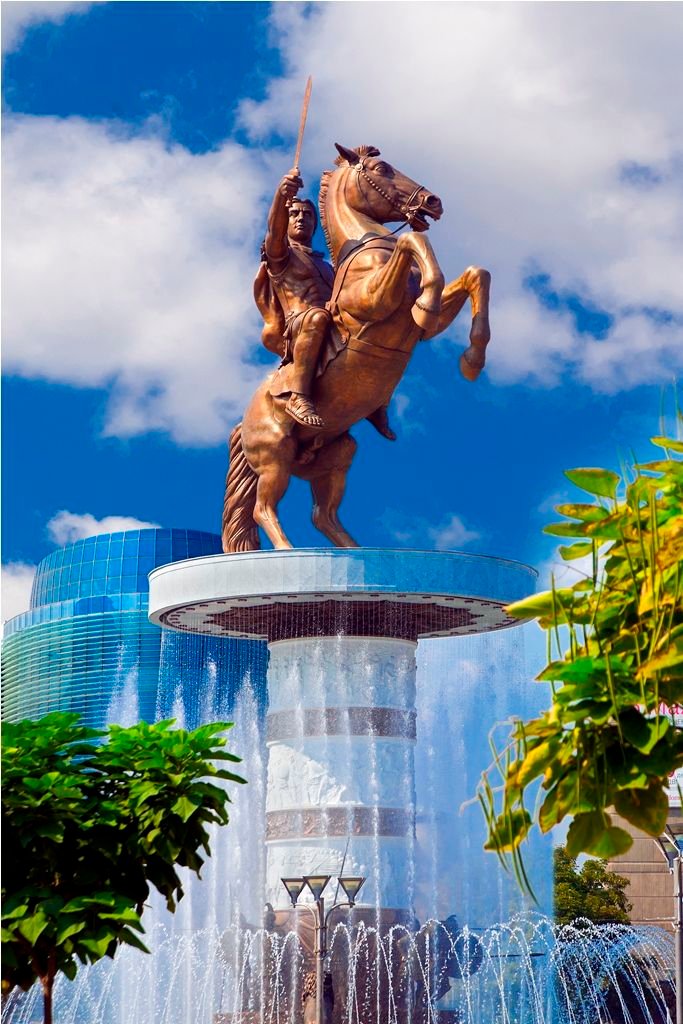
Must-See Attractions
North Macedonia is a treasure trove of natural wonders, ancient landmarks, and vibrant cultural sites. Whether you’re drawn by the serenity of its lakes, the grandeur of its mountains, or the charm of its old towns, the country offers a rich palette of experiences for every traveler.
Lake Ohrid and Ohrid Town
Lake Ohrid is the crown jewel of North Macedonia-a UNESCO World Heritage Site and one of Europe’s oldest and deepest lakes. Its crystal-clear waters are surrounded by rolling hills, charming villages, and the historic town of Ohrid, a place where Byzantine churches, cobbled streets, and medieval fortresses create an enchanting atmosphere. The town’s old quarter is dotted with beautiful churches, including the iconic Church of Sveti Jovan perched on a cliff above the lake, offering panoramic views that are perfect for sunset photography. The medieval Church of Sveti Kliment i Pantelejmon, with its early Christian mosaics, and the 13th-century Church of Sveta Bogorodica Perivlepta, famed for its vivid frescoes, are must-visits for history and art lovers. Strolling along the Ohrid Boardwalk, you’ll find rocky beaches, inviting restaurants, and lively summer festivals that bring the lakeshore to life.
Matka Canyon
Just outside Skopje, Matka Canyon is a haven for nature lovers and adventurers. This dramatic gorge, carved by the Treska River, is renowned for its tranquil boat tours, scenic hiking trails, and opportunities for kayaking. The canyon is home to ancient monasteries like the 14th-century Church of Sveti Andrej, as well as the mysterious Vrelo Cave-one of the deepest underwater caves in Europe. The canyon’s serene beauty, with its steep cliffs and lush greenery, makes it a perfect escape from the city.
Skopje’s Old Bazaar and Kale Fortress
Skopje, the capital, is a city of contrasts, where Ottoman-era mosques and bustling bazaars sit alongside neoclassical monuments and modern sculptures. The Old Bazaar is a vibrant marketplace filled with multicultural shops, local cuisine, and cobblestone walkways. It’s a place to soak up the city’s history, sample traditional foods, and browse handmade crafts. Nearby, the Skopje Kale Fortress offers panoramic views over the city and the Vardar River, with ramparts and ruins that date back to the 6th century.
Millennium Cross and Vodno Mountain
For breathtaking vistas, head to Vodno Mountain, where the Millennium Cross stands as one of the world’s largest Christian crosses. Accessible by cable car or hiking trail, the summit provides sweeping views of Skopje and the surrounding landscapes. The area is ideal for photography, picnics, and nature walks.
Samoil’s Fortress
Overlooking Ohrid, Samoil’s Fortress is a powerful symbol of the town’s medieval heritage. Visitors can explore the ancient ramparts, enjoy panoramic views of the lake and town, and imagine the fortress’s role in the region’s tumultuous history.
Memorial House of Mother Teresa
In the heart of Skopje, the Memorial House of Mother Teresa honors the life and legacy of the Nobel Peace Prize laureate, who was born in the city. The site features a tranquil chapel, a small museum with personal artifacts, and a gift shop, offering a quiet space for reflection.
National Parks: Mavrovo, Pelister, and Galicica
Nature enthusiasts should not miss North Macedonia’s national parks. Mavrovo National Park is famed for its dense forests, alpine meadows, and the picturesque Mavrovo Lake. It’s a year-round destination, offering hiking, mountain biking, and skiing in winter. Pelister National Park, with its ancient Molika pine forests and glacial lakes, is a paradise for trekkers and wildlife watchers. Galicica National Park, perched between Lake Ohrid and Lake Prespa, offers stunning views, diverse flora and fauna, and excellent hiking trails.
Other Notable Sites
- Stone Bridge: A historic landmark connecting Skopje’s main square to the Old Bazaar, perfect for scenic walks and river views.
- Ancient Macedonian Theater of Ohrid: A well-preserved Hellenistic theater still used for performances and festivals.
- Holocaust Memorial Center: A moving tribute to the Jewish community of North Macedonia, located in Skopje.
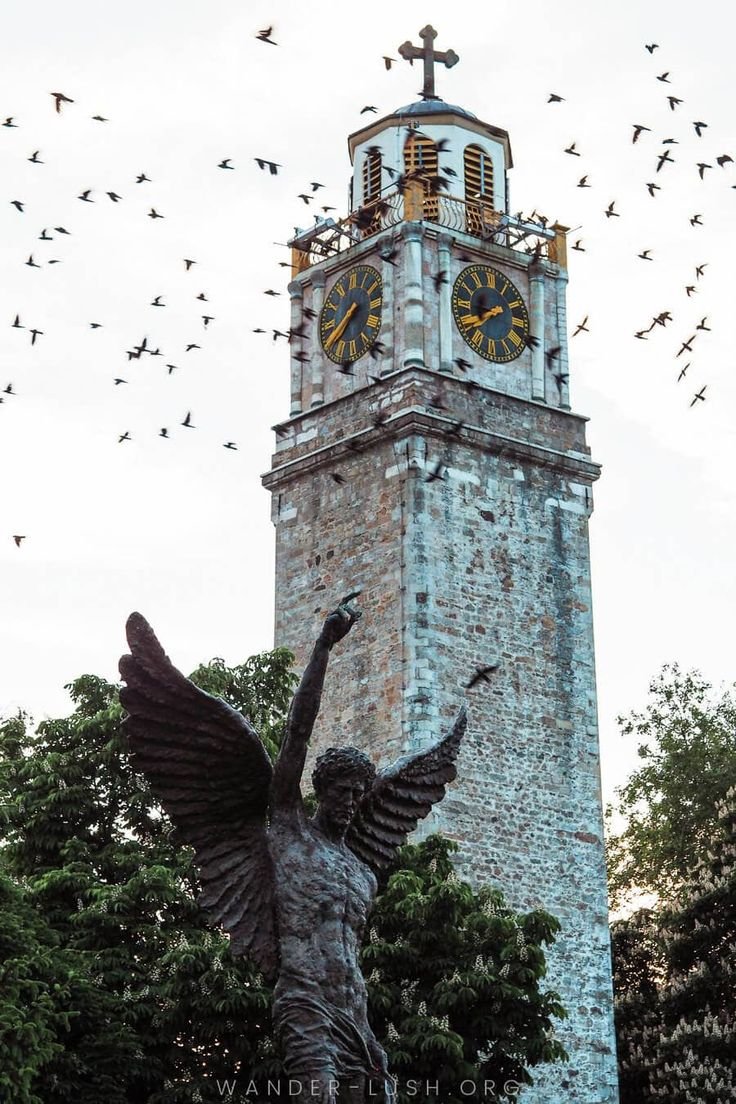
Must-Do Activities
- Explore Ohrid’s Old Town and Swim in Lake Ohrid
Wander through Ohrid’s atmospheric old quarter, visit its many churches, and take a dip in the lake’s cool, inviting waters. Enjoy a lakeside meal or simply relax on the boardwalk, soaking in the tranquil ambiance and stunning scenery.
- Kayak or Boat in Matka Canyon
Rent a kayak or join a boat tour to explore the canyon’s serene waters and hidden caves. Visit the ancient monasteries tucked into the cliffs and marvel at the natural beauty that surrounds you. For the adventurous, hiking trails wind through the canyon, offering spectacular views and opportunities to spot local wildlife.
- Hike to the Millennium Cross on Vodno Mountain
Take the cable car or hike up Vodno Mountain for a rewarding view from the Millennium Cross. The journey offers fresh mountain air, scenic vistas, and a chance to escape the urban bustle of Skopje.
- Discover Skopje’s Old Bazaar
Immerse yourself in the sights, sounds, and flavors of Skopje’s Old Bazaar. Sample traditional Macedonian dishes, shop for local crafts, and experience the city’s multicultural heritage. Don’t miss the chance to photograph the vibrant market scenes and historic architecture.
- Attend a Cultural Festival
If your visit coincides with the summer, experience the Ohrid Summer Festival, which brings world-class music, theater, and dance to the lakeshore. In July, the Galičnik Wedding Festival in Mavrovo National Park offers a unique glimpse into centuries-old traditions, complete with folk music, dancing, and colorful costumes.
- Hike in the National Parks
Lace up your boots and explore the trails of Mavrovo, Pelister, or Galicica National Parks. Whether you’re trekking to mountain peaks, wandering through pine forests, or birdwatching by a glacial lake, the parks offer endless opportunities for outdoor adventure and natural discovery.
- Visit the Memorial House of Mother Teresa
Pay your respects at the Memorial House of Mother Teresa in Skopje. Learn about her extraordinary life and humanitarian work, and reflect in the peaceful chapel.
- Explore Ancient Ruins and Monuments
History buffs will enjoy visiting the Ancient Macedonian Theater of Ohrid, the ruins of Samoil’s Fortress, and the many Byzantine and Ottoman-era churches scattered throughout the country. Each site tells a story of North Macedonia’s rich and layered past.
- Taste Local Wines in the Tikveš Region
Venture to the Tikveš wine region, where you can tour vineyards, sample award-winning Macedonian wines, and enjoy traditional meals paired with local vintages. Wine tasting is a delightful way to experience the country’s agricultural heritage and warm hospitality.
- Experience Village Life
Take a day trip to traditional villages like Vevčani or Krushevo, where you can witness local crafts, folklore, and rural customs. Enjoy homemade food, meet friendly locals, and experience the authentic side of North Macedonia.
North Macedonia’s must-see attractions and must-do activities offer a perfect balance of natural beauty, cultural richness, and warm hospitality. Whether you’re exploring ancient towns, hiking dramatic landscapes, or simply savoring a lakeside sunset, you’ll find North Macedonia is a destination that leaves a lasting impression on every traveler.
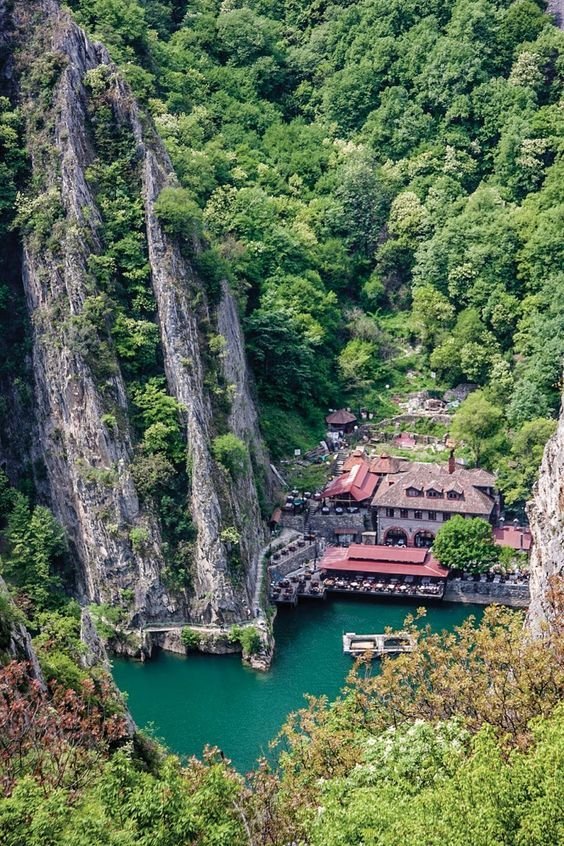
Travel Tips
Traveling to North Macedonia is an enriching experience, offering a blend of ancient culture, breathtaking landscapes, and genuine hospitality. To help you make the most of your journey, here’s a comprehensive guide on staying safe, respecting local customs, and mastering a few essential language basics.
Safety Advice
General Safety
North Macedonia is considered a safe country for travelers. Violent crime is rare, and petty crime rates are relatively low compared to many European destinations. The most common issues tourists might encounter are pickpocketing or bag snatching, especially in crowded markets, public transport, or during festivals. Always keep your belongings secure and be aware of your surroundings in busy areas.
Health and Medical Care
Healthcare facilities in major cities like Skopje and Ohrid are adequate for most needs, but rural areas may have limited services. It’s advisable to have comprehensive travel insurance that covers medical emergencies. Bring any necessary medications with you, as specific brands may not be available locally.
Transport and Road Safety
Public transportation is generally safe and reliable. Buses and trains connect most cities and towns, but schedules can be irregular in rural areas. If you rent a car, drive carefully-mountain roads can be narrow and winding, and local driving habits may differ from what you’re used to. Always wear seatbelts, avoid driving at night in unfamiliar areas, and watch for livestock or pedestrians on country roads.
Natural Hazards
North Macedonia’s natural beauty comes with some risks. When hiking in national parks or remote regions, check the weather forecast, carry enough water, and inform someone of your plans. Mobile coverage may be limited in mountainous areas, so consider carrying a map or GPS device.
Emergency Numbers
- Police: 192
- Ambulance: 194
- Fire: 193
These numbers are available 24/7 and English-speaking operators are often on hand in larger cities.
Local Customs
Greetings and Social Etiquette
A firm handshake with direct eye contact is the standard greeting in North Macedonia, especially in business or formal settings. Among friends and family, it’s common to exchange a kiss on each cheek. Always use formal titles and last names until invited to do otherwise, as this is a sign of respect and good manners.
Dress Code
Urban areas like Skopje and Bitola have a European dress sense, but in rural areas, you’ll notice more traditional attire. When visiting religious sites, dress modestly by covering your shoulders and knees. Remove your shoes before entering mosques, and avoid overly casual clothing in public spaces-clean, neat attire is appreciated and seen as a mark of respect.
Dining Etiquette
Meals in North Macedonia are social events. If you’re invited to a local’s home, bring a small gift such as flowers or chocolates. Wait for the host to begin eating before you start, and try a bit of everything offered. Complimenting the host on the food is a polite gesture. When dining out, it’s customary to leave a tip of around 10% of the bill.
Gift Giving
Gift-giving is common, especially during holidays, name days, or when visiting someone’s home. Accept gifts with both hands and express gratitude. Refusing a gift or food may be considered impolite.
Public Behavior
North Macedonians value politeness and good manners. Avoid being loud, laughing excessively, or using profanity in public. On public transport, offer your seat to the elderly, pregnant women, or those with disabilities. Smoking is widespread, but always ask before lighting up in someone’s home or in non-smoking areas.
Religious and Cultural Sensitivity
North Macedonia is home to Orthodox Christians, Muslims, and other religious groups. Show respect for all religious practices-dress modestly at places of worship, and be mindful of religious holidays. During major festivities like Orthodox Easter or Ramadan, participate respectfully if invited, even if you are not of that faith.
Taboos
- Declining food or drink offered by your host is seen as rude.
- Making noises while eating, belching, or speaking loudly at the table is frowned upon.
- Avoid discussing controversial topics such as politics or ethnic issues with people you don’t know well.
Language Basics
The Macedonian Language
Macedonian is the official language of North Macedonia, written in a modified Cyrillic script. It is a South Slavic language, closely related to Bulgarian and similar to Serbian. Albanian is also widely spoken, particularly in the west, and you may hear Turkish and Roma languages in some communities.
English Proficiency
English is spoken in hotels, restaurants, and by younger generations in urban areas. However, learning a few basic Macedonian phrases will be greatly appreciated and can help you connect with locals.
Essential Macedonian Phrases
English | Macedonian (Cyrillic) | Pronunciation |
Hello | Здраво | ZDRAH-vo |
Good morning | Добро утро | DOH-bro OO-tro |
Good evening | Добра вечер | DOH-bra VEH-cher |
Thank you | Благодарам | blah-GOH-da-ram |
Please | Ве молам | VEH MOH-lam |
Yes | Да | DA |
No | Не | NEH |
Excuse me/Sorry | Извинете | iz-VEE-ne-te |
How much? | Колку чини? | KOHL-koo CHEE-nee |
Do you speak English? | Зборувате англиски? | zbo-ROO-va-te ang-LEE-ski? |
Tips for Language Use
- Greet people with “Zdravo” (Hello) or “Dobar den” (Good day).
- Use “Blagodaram” (Thank you) to show appreciation.
- “Ve molam” (Please) is polite when making requests.
- When in doubt, a smile and a friendly attitude go a long way.
Written Language
The Macedonian alphabet consists of 31 Cyrillic letters. Street signs, menus, and official documents are usually in Macedonian, but English translations are increasingly common in tourist areas.
Final Tips for a Smooth Journey
Traveling in North Macedonia is a rewarding experience, made even richer by showing respect for local customs and making an effort with the language. The country’s traditions of hospitality, strong family values, and cultural pride will make you feel welcome. By observing etiquette, dressing appropriately, and learning a few Macedonian words, you’ll not only enjoy a smoother journey but also leave a positive impression on the people you meet. Safe travels and enjoy discovering the heart of the Balkans!

